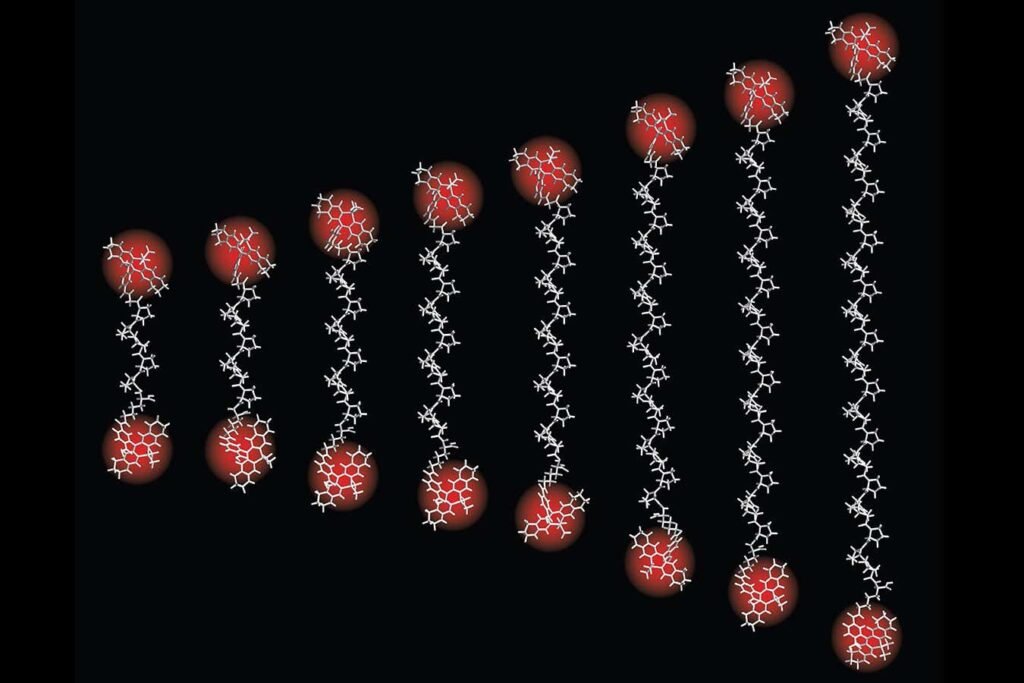
This fluorescent technique can accurately measure small distances
Steffen J. Sahl / Max Planck Institute for Multidisciplinary Sciences
The smallest “ruler” ever is so precise that it can measure the width of an atom within a protein.
Proteins and other large molecules, or macromolecules, sometimes fold into the wrong shape, which can have an effect the way it works. Some structural changes also play a role in such conditions Alzheimer’s disease. To understand this process, it is important to determine the exact distance between atoms and groups of atoms within these macromolecules, he says. Steffen Sahl at the Max Planck Institute for Multidisciplinary Sciences in Germany.
“We wanted to move from a microscope that maps the positions of macromolecules relative to each other to taking this bold step of actually going inside the macromolecule,” he says.
To construct their intramolecular “rule”, Sahl and his colleagues used it fluorescenceor that some molecules glow when illuminated. They attached two fluorescent molecules to a larger protein molecule at two different points and then used a laser beam to illuminate them. Based on the light emitted by the glowing molecules, the researchers were able to measure the distance between them.
They used this method to measure the distances between several well-understood protein molecules. The smallest of these distances was 0.1 nanometer, the width of a typical atom. The fluorescent ruler also provided accurate measurements down to about 12 nanometers, meaning it had a wider measurement range than can be achieved with traditional methods.
In one example, the researchers looked at two different forms of the same protein and found that they could distinguish between them because the two identical points were 1 nanometer apart for one form and 4 nanometers apart for the other. In another experiment, they measured small distances in a human bone cancer cell.
Sahl says the team achieved this precision by taking advantage of several recent technological advances, including better microscopes and fluorescent molecules that don’t blink and don’t produce a glow that could be confused with another effect.
“I don’t know how they got the microscopes so stable. The new technique is undoubtedly a technical advance,” he says Jonas Ries at the University of Vienna in Austria. But future research will have to determine which specific molecules will be most valuable as a source of information for biologists, he says.
“Despite its impressive accuracy, the new method may not necessarily achieve the same level of detail or resolution when applied to more complex biological systems,” he says. Kirti Prakash At the Royal Marsden NHS Foundation Trust and Cancer Research Institute, UK. He also says that many other new techniques are already becoming competitive when it comes to measuring smaller and smaller distances.
Sahl says his team will now work on two tracks: further refining the method and expanding their ideas about the macromolecules they can now see inside.
Topics:

